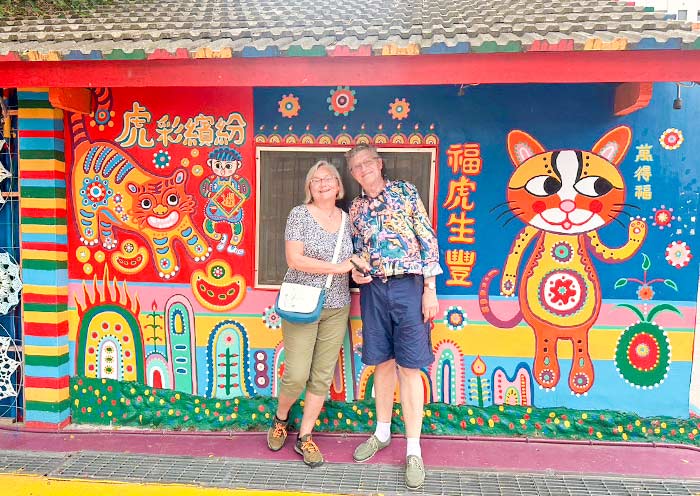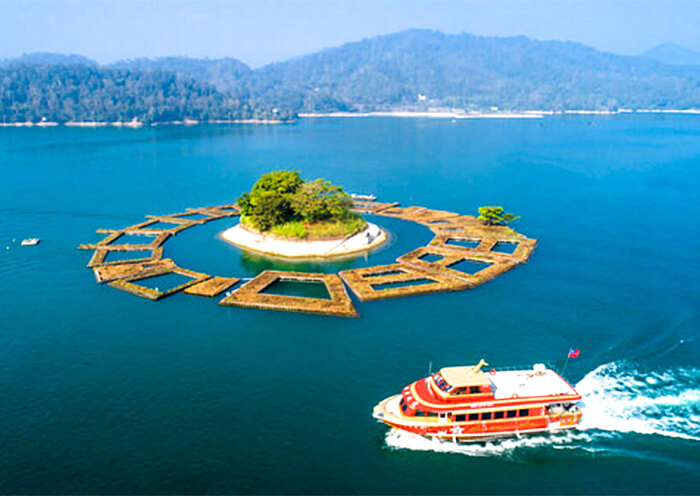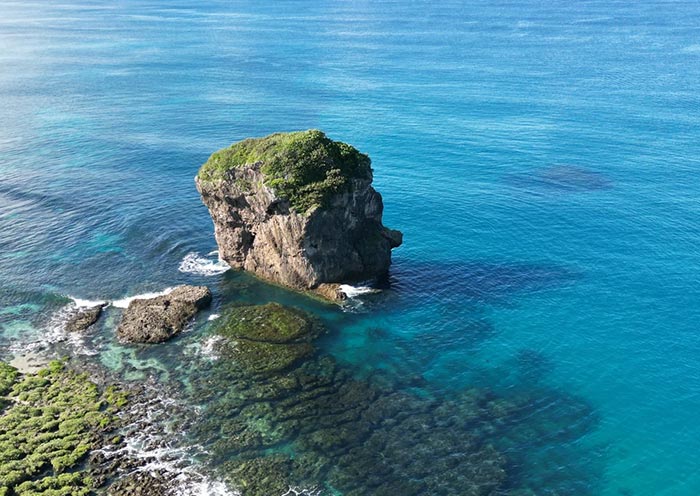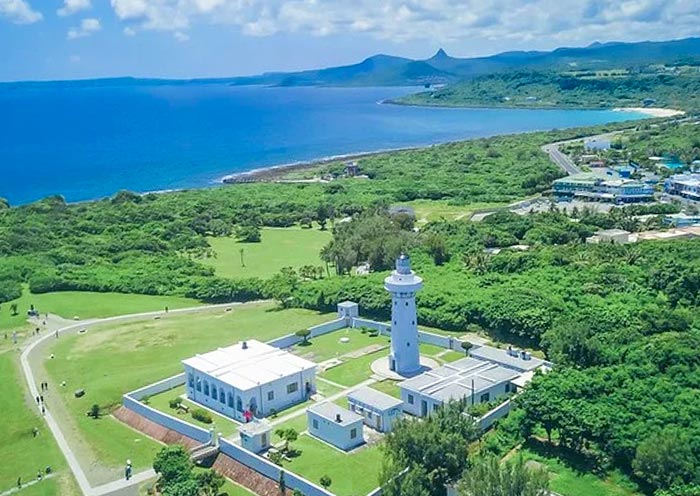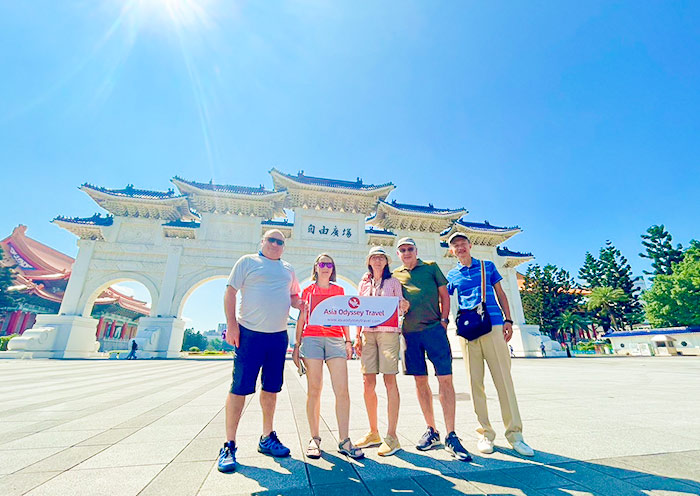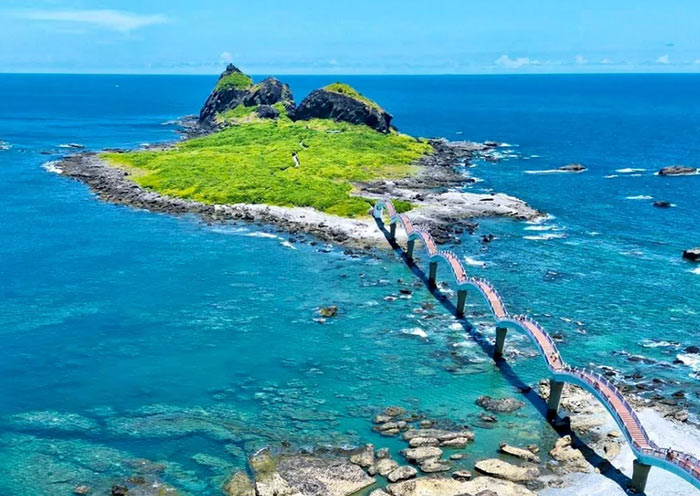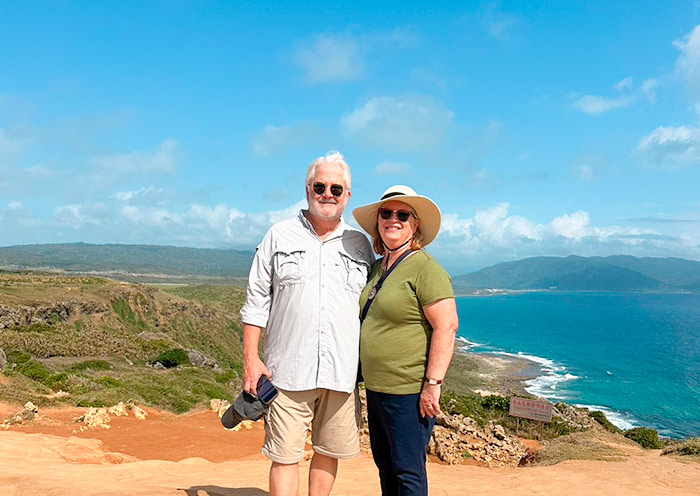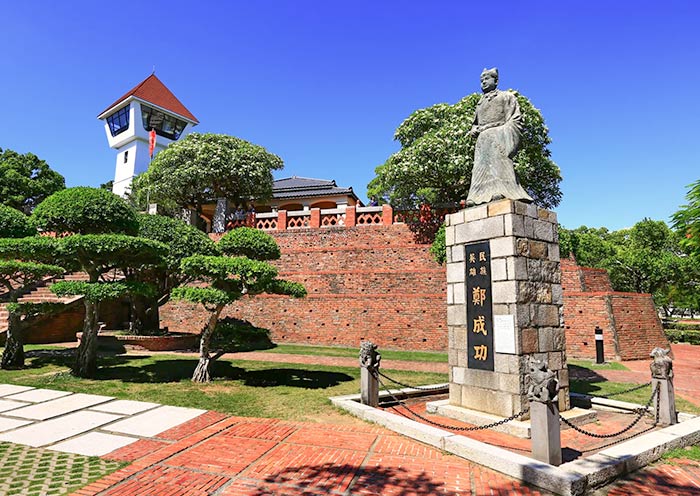7 Days Taiwan Nature Tour - Kaohsiung, Kenting Sun Moon Lake & Alishan
- Highlights
- Itinerary
- Price
- Trip Notes
- Accommodation
- Photos
- Reviews
Best Taiwan Nature Travel Starts & Ends in Kaohsiung
Have a week's vacation? Plan to enter & exit Taiwan from Kaohsiung? This 7 Days Taiwan Tour from Kaohsiung Port to Kenting Beach, Sun Moon Lake & Alishan is ideal for you. Also, it is perfect for nature lovers, culture enthusiasts, and those seeking a tropical escape.
Your journey begins with sun-kissed Kenting: wander Hengchun’s historic walls, savor fresh seafood at Donggang Market, and lose yourself to Baishawan’s turquoise waves. Delve into Kenting's natural wonders, including its National Forest Recreation Area, the iconic Eluanbi Lighthouse (Southernmost Point of Taiwan), and the marine wonders at the National Museum of Marine Biology & Aquarium.
Next, trace north to Taichung for a spot at Rainbow Village’s colorful murals, then to Nantou’s Sun Moon Lake—glide its calm waters by yacht. Head west to Alishan: breathe in high-mountain tea, ride the historic forest train through misty woods. Then immerse yourself in Chiayi's architectural charm.
Conclude your unforgettable tour back in Kaohsiung, visiting the historic Cijin Old Street with seaside charm, the impressive Fo Guang Shan Buddha Museum and picturesque Lotus Lake (Dragon and Tiger Pagodas; CNN Recommended).
Take our incredible 7 Days Taiwan Tour Package from Kaohsiung, perfectly crafted by your local travel agent! A symphony of nature, culture, and flavor—your Taiwanese adventure awaits.
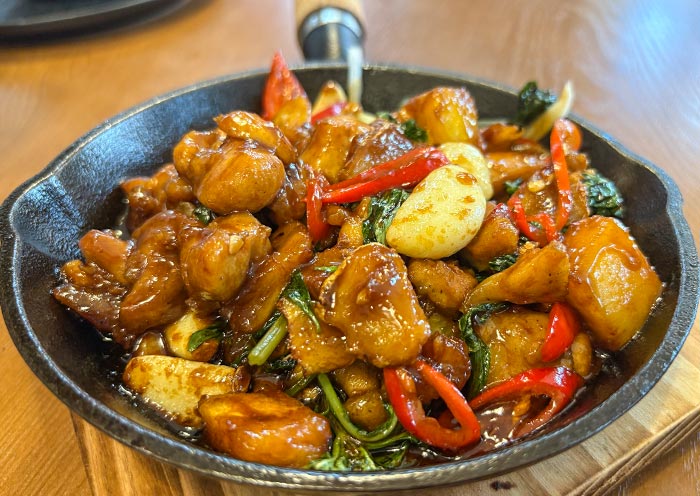
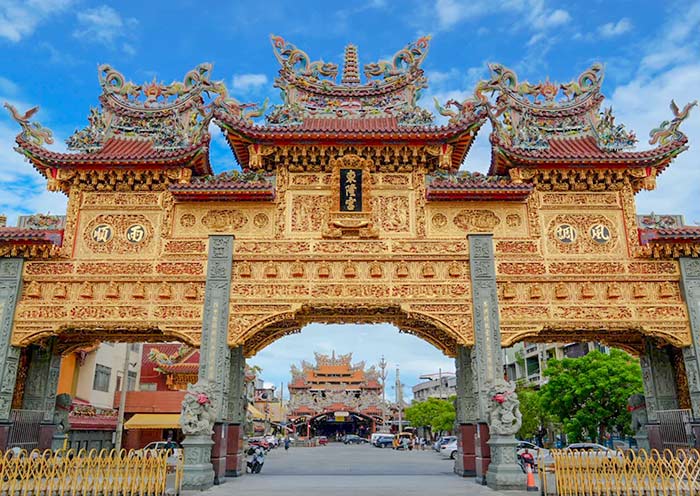
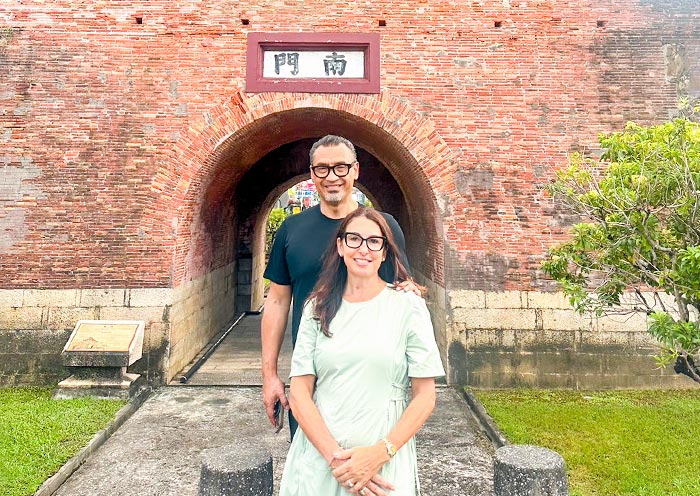
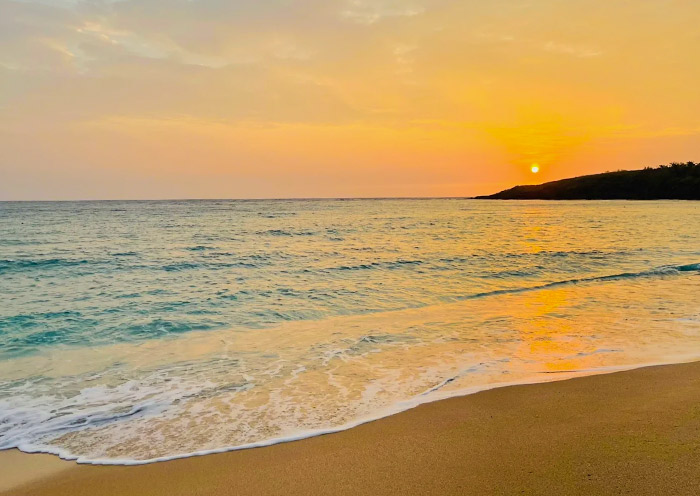
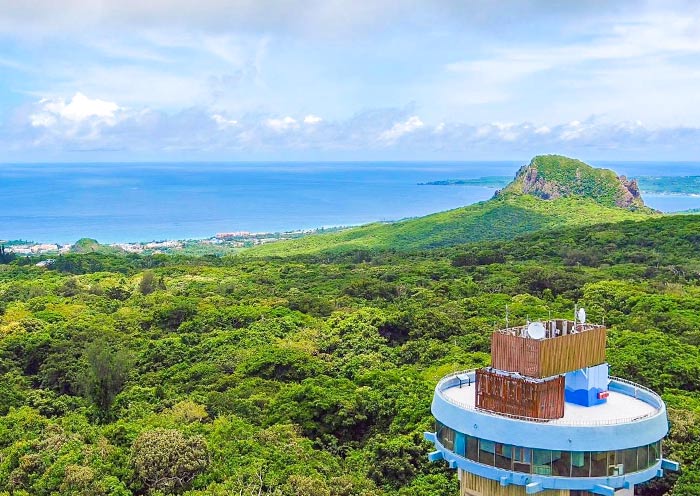
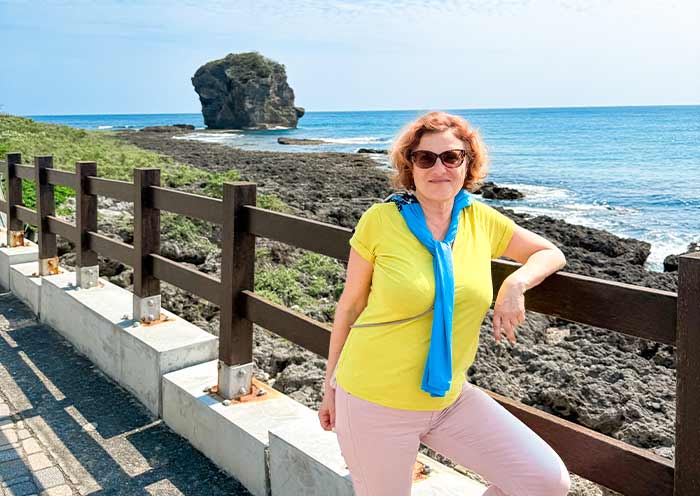
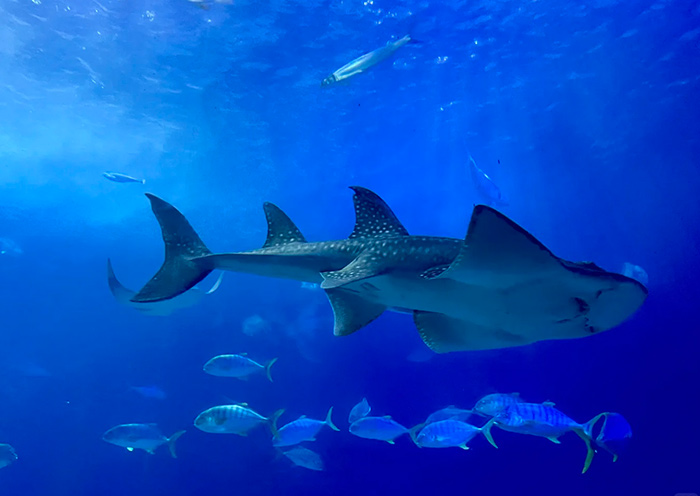
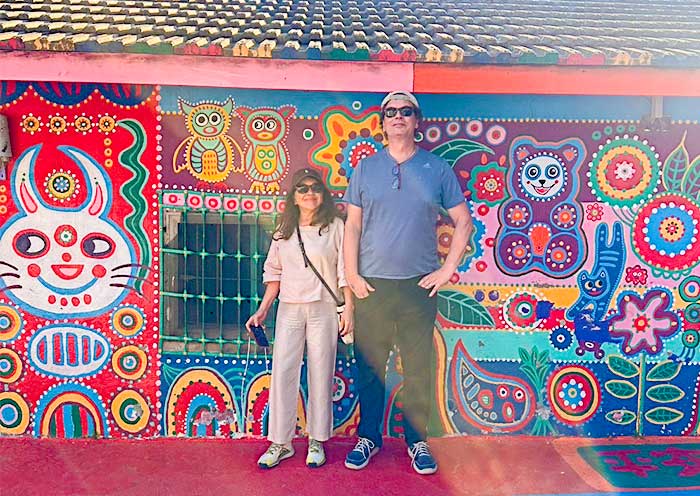
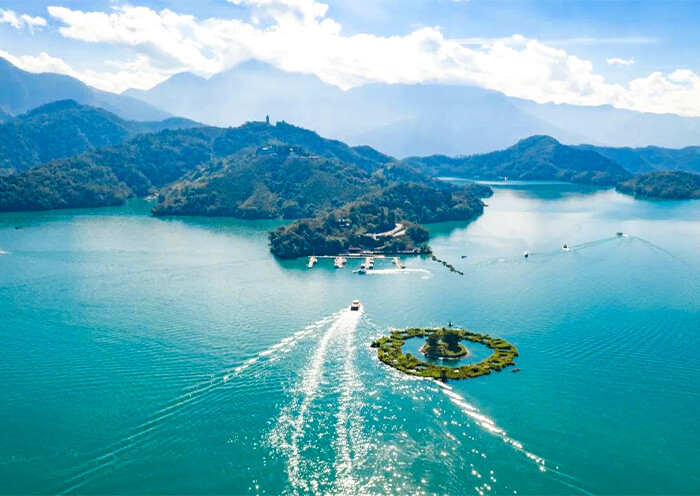
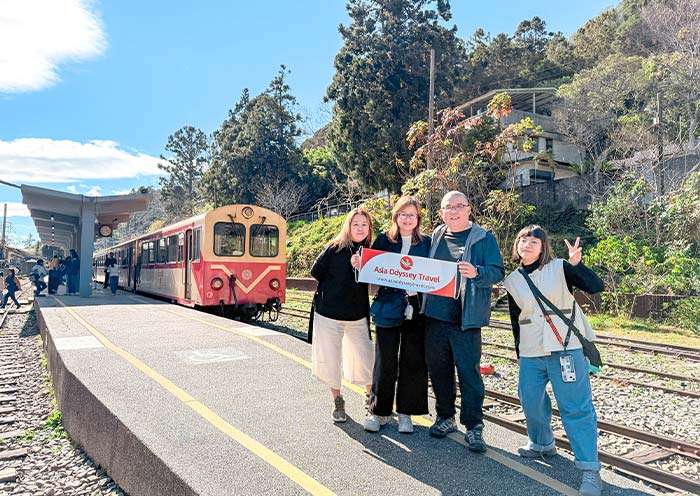
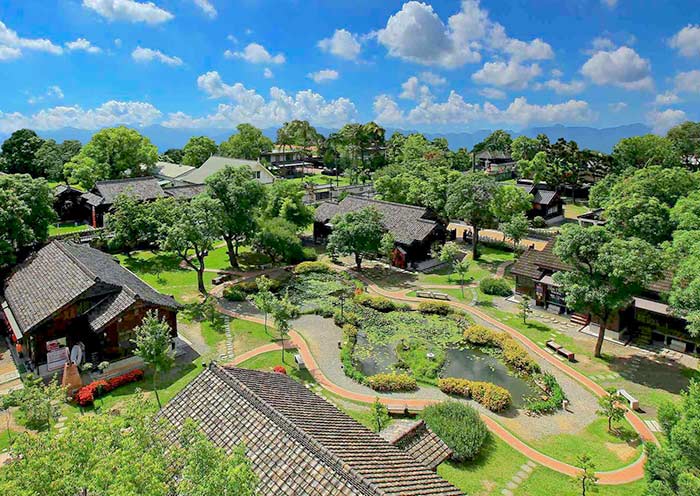
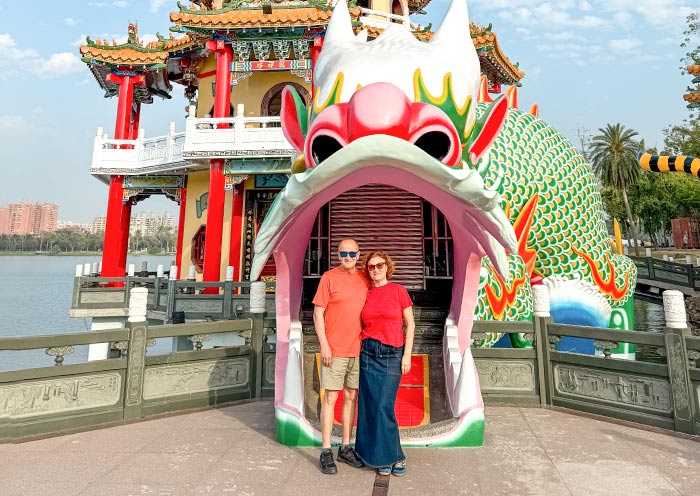
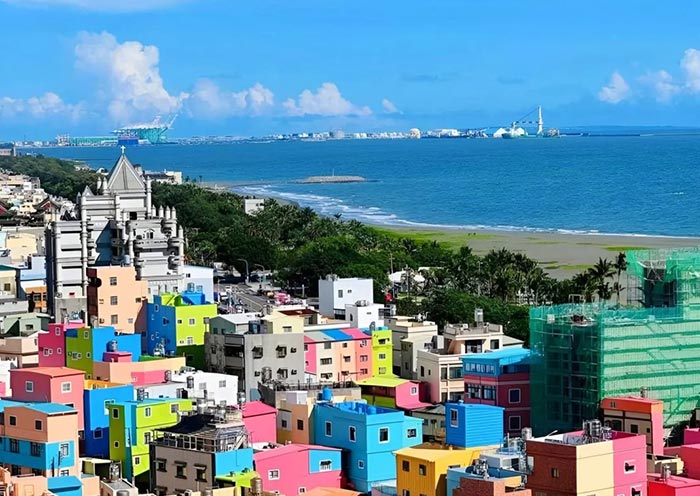
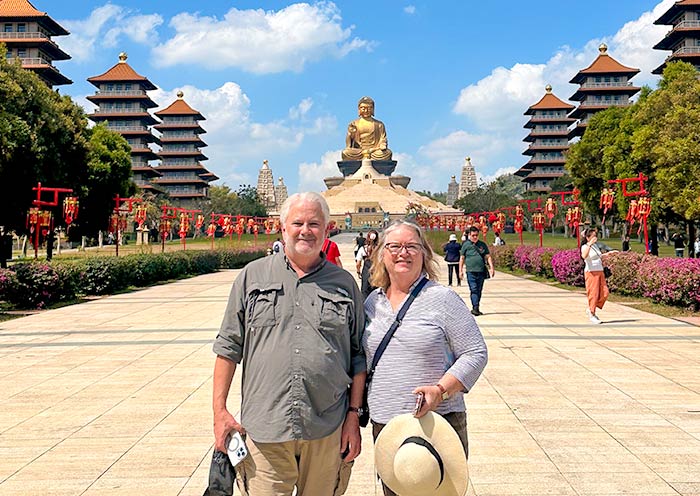
Itinerary at a Glance
Kaohsiung, Taiwan (2 Days)
Maritime Building Café (Exterior View), Donggang Donglong Temple, Donggang Huaqiao Seafood Market, Cijin Ferry, Cijin Old Street (Cijin Island), Cijin Mazu Temple, Cijin Beach, Fo Guang Shan Buddha Museum (Closed on Tuesdays), Lotus Lake (Dragon and Tiger Pagodas)
Kenting, Taiwan (2 Days)
Hengchun Old Town (City Walls), Kenting Baishawan Beach, Kenting National Forest Recreation Area, Sail Rock, Eluanbi Lighthouse (Closed on Mondays), Southernmost Point of Taiwan, Longpan Park Grassland, National Museum of Marine Biology & Aquarium
Taichung, Taiwan (0.5 Day)
Rainbow Village
Nantou, Taiwan (1 Day)
Sun Moon Lake Tour: Shuishe Pier → Xuanguang Temple Pier → Ita Thao Pier → Shuishe Pier
Chiayi, Taiwan (1.5 Days)
Alishan Mountain Tour: Alishan Route A: Zhaoping Station, Sisters Ponds, Three Brothers & Four Sisters, Golden Pig Auspice, Forever Love, Magnolia Garden, Shouzhen Temple; Alishan Route B: Shouzhen Temple, Three Generations of Wood, Alishan Museum, Xianglin Elementary School, Ciyun Temple, Alishan Sacred Tree Remains; Hinoki Village
Itinerary Day by Day
This morning, head to explore Donggang Donglong Temple (40 km; 1hour) by a quick photo stop at Maritime Building Café. At lunch time, visit Huaqiao Fish Market for seafood. In the afternoon head to Kenting and explore Hengchun Ancient City, Kenting Baishawan Beach. Overnight in Kenting.
First, you will have a quick stop at Dapeng Bay for a photo of the famous Maritime Building Café (Exterior View). It is the first "church cafe" in Taiwan, located on the sea, making it extremely unique. Its bright, goose-yellow color scheme inevitably brings to mind the architecture of churches in Spain. To reach this church cafe, one must first walk across a 304.5-meter-long seawall. Since its opening, it has become a popular photo spot on Instagram.
Then, explore Donggang Donglong Temple, which is dedicated to the deity Marquis Wen. Originally, Marquis Wen was a scholar of the Tang Dynasty who met with misfortune while traveling on imperial orders. After becoming a god, he frequently patrolled the coastal areas of Fujian and Zhejiang, protecting ships that traveled there. In 1706, a large number of sacred logs washed ashore at Donggang Beach overnight, inscribed with the words "Donggang Wen Family." Following this divine sign, devotees built a temple to honor Marquis Wen. Its most distinctive feature is a paifang (decorative archway) adorned with layers of bright gold leaf, which has a history of over 300 years.
PS: The Donglong Temple holds a welcoming ceremony for Marquis Wen (peace festival; 迎王/平安祭典) every three years, lasting eight days and seven nights. The highlight of the entire festival is the burning of the Marquis' ship on the last day. The main purpose of the "Welcoming Marquis Wen/Peace Festival" is to invoke the divine power of the great deity and other gods to dispel local evils, plagues, and diseases. Locals place greater importance on the ceremony than on the New Year, as everyone returns home to participate in the event, contributing money or effort to ensure a successful celebration. Try your luck to witness the festival.
At lunchtime, it is great to pay a visit to Donggang Huaqiao Seafood Market, which is located near the Donggang Fishery Port, one of Taiwan's major fishing ports. The Huaqiao Fish Market, the budget seafood paradise, is the most representative seafood market in the area. The market houses nearly 400 vendors offering a wide variety of freshly caught seafood, including the "Three Treasures of Donggang," such as black skipjack tuna, sakura shrimp, and saury roe, all delivered straight from the fishing port docks. Here, you can select your favorite seafood and choose to have it cooked on-site by the market's restaurants (additional processing fee required), or enjoy ready-to-eat seafood dishes, as well as other local snacks.
After lunch, time to head to Kenting (70 km, 1.5h) and visit Hengchun Old Town.This town was completed in 1879 and is the southernmost county town in Taiwan. Due to its pleasant climate and year-round spring-like weather, it was named "Hengchun"(恒春; In Chinese, it means Eternal Spring). It is not only the only remaining ancient town in Taiwan with all its city gates preserved, but also the filming location for the movie Cape No. 7 (《海角七号》). Surrounded by mountains, the town is flanked by Santai Mountain ( Tortoise/玄武) to the north, Longluan Mountain (Blue Dragon/青龙) to the east, Huxi Mountain (White Tiger/白虎) to the west, and Xiping Mountain (Rosefinch/朱雀) to the south, aligning with traditional feng shui principles.
The Hengchun Ancient Town preserves its four gates: east, west, south, and north. You can start the tour from the west gate, walking to Tianhou Temple and Monkey Cave Mountain, then to the well-preserved south gate, and finally to the east gate (where remnants of the battery, gunholes, and city wall paths can be found) to enjoy panoramic views of Hengchun Old Town. Additionally, you can savor local delicacies such as winter melon duck, Mung Bean Delicacy (绿豆馔), and mochi.
At last, reach Kenting’s Baushanwan Beach. Baishawan Beach (White Sand Beach) is a shell beach composed of marine organisms' shells, named for its fine, white sand. This beach stretches 500 meters long and 40 meters wide, making it not only the most beautiful beach in Kenting but also a famous filming location for renowned director Ang Lee's movie Life of Pi (the scene where the thin tiger departs was filmed here), making it a must-visit spot for tourists in Kenting.
Here, you can participate in a variety of water activities such as swimming, diving, sailing, and jet skiing (at your own expense). On land, you can enjoy barbecuing and camping or biking and hiking along the bicycle paths (Self-pay). Especially during sunset, when the evening glow spreads across the sea, lying on the beach and leisurely enjoying the ocean view is truly a great pleasure in life.
Overnight in Kenting. "Kenting", in Chinese means "the robust young men for cultivation," as it was named due to the Qing Dynasty's recruitment of citizens to develop the area.
Free Time Ideas:
Kenting Night Market: There is a wide variety of snacks available, such as grilled squid, banana pancakes, roasted wild boar meat, QQ egg milk, fried Oreos, cocktails, ice cream, pizza, and more.
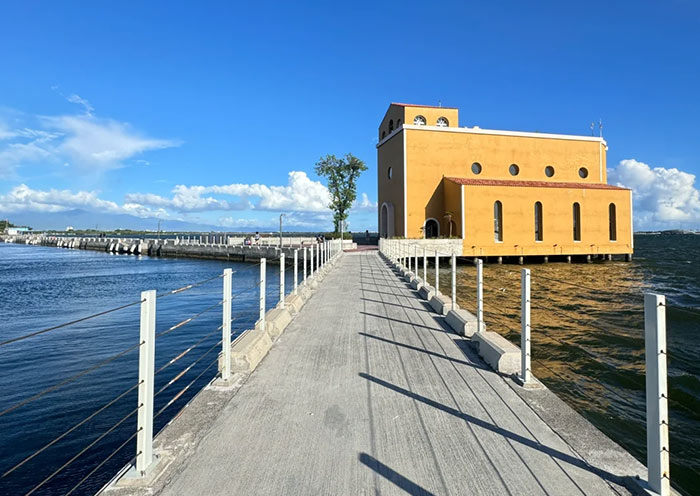
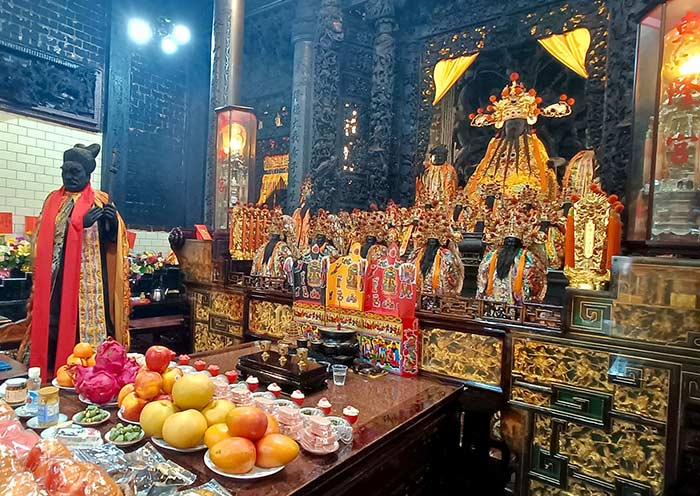


This morning, head to explore Kenting National Forest Recreation Area. At lunch time, vis Sail Rock (Fanchuangshi), Eluanbi Lighthouse, Longpan Park Grassland. Overnight in Kenting.
Taiwan's forest coverage rate reaches 61%, and Kenting National Forest Recreation Area is an excellent place to learn about the local forest ecology. This park features natural sea erosion cave trails with unique geological evolution: it was originally an ocean garden populated by stony corals, calcareous algae, foraminifera, and shells. Due to tectonic plate movements 500,000 years ago, it formed a distinctive forest ecosystem - a high coral reef forest - combining rich ecology, monsoon rainforest characteristics, and limestone topography.
Kenting National Forest Recreation Area was Taiwan's first tropical botanical garden and has a history of over a century. The park is divided into two visitor areas and 17 sightseeing points, showcasing over 1,200 species of tropical plants. The park offers two themed routes: "Botanical Stroll" (1.5-2 hours) and "Geological Adventure" (2.5-3 hours), allowing you to choose based on your physical ability and interests.
Along the way, you may see underground caves, stalactites, coral reef formations, and rare plants with exposed roots, as well as have the chance to encounter wildlife such as Formosan sika deer and Taiwanese macaques. This area is also a favorite bird-watching spot for locals. Climbing the Observation Tower provides a view of the magnificent forest canopy, Frog Rock, and the stunning Pacific Ocean, allowing you to appreciate the beauty of nature fully.
In the afternoon, transfer to Eluanbi Lighthouse via a photo stop at Sail Rock. The Sail Rock, standing at about 18 meters high, is an early coral reef rock that rolled down from above to the seashore. When viewed from a distance, the Sail Rock resembles a sailboat entering the harbor with its sail raised. The surface of the rock is covered with lush wildflowers, creating a picturesque contrast with the deep blue sea. Moreover, the Sail Rock is famous for its side profile, which bears a striking resemblance to a human face in profile. Locals playfully refer to it as the "Nixon Head," adding to its renown and uniqueness.
Then, head to Eluanbi Park for Eluanbi Lighthouse & Southernmost Point of Taiwan. The Eluanbi Lighthouse, built in 1881, is Taiwan's southernmost lighthouse and a must-visit attraction in Kenting. Facing southwest with mountains at its back and overlooking the sea, the lighthouse is constructed in the form of a fortress, with gun ports in the walls and surrounded by a moat, making it the only armed lighthouse in the country.
Located on the left side of the lighthouse is the Pacific Ocean, directly facing the Bashi Channel and overlooking the island of Luzon in the Philippines across the sea. Here, the waves meet the sky, creating a magnificent natural scenery that has long been recognized as one of Taiwan's Eight Views. The park not only features a variety of tropical coastal plants but also preserves coral reef formations. Walking along the coastal trail, you can fully appreciate the unique landscapes this area has to offer. Sure you can visit the Southernmost Point of Taiwan and take pictures there.
At last, pay a visit to Longpan Park Grassland, the most beautiful seaside grassland in Taiwan. The area belongs to an uplifted limestone plateau, where the limestone, being susceptible to water erosion, has created unique geological landscapes such as cliffs, seepage holes, limestone caves, and red soil.
Standing on the grassy plains of Longpan, you can overlook the winding coastline from a high vantage point, witnessing the Pacific Ocean showcasing its wilder side. This location is also a sacred site for viewing sunrises and starry night skies—as the first place on the island of Taiwan to greet the sunrise, it attracts numerous visitors every New Year's Eve to welcome the first light of the new year. Overnight in Kenting.
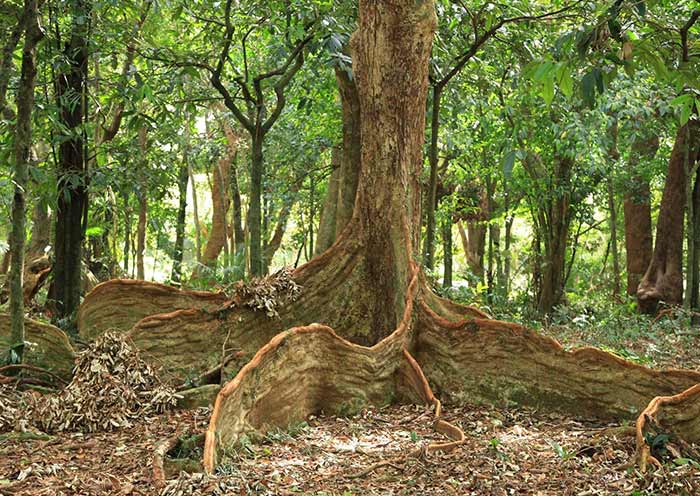
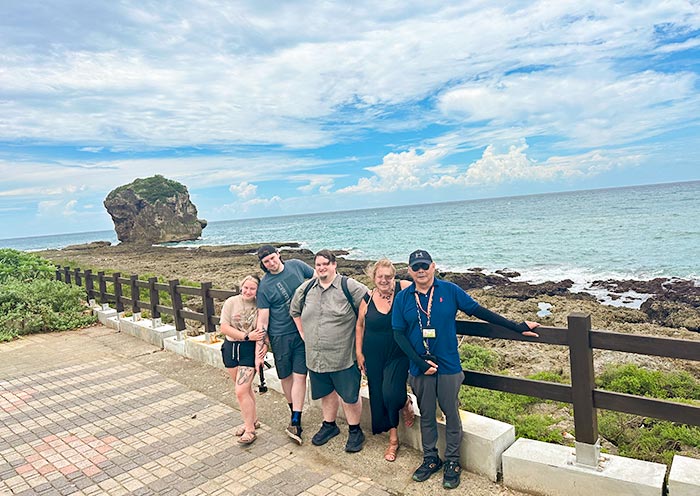
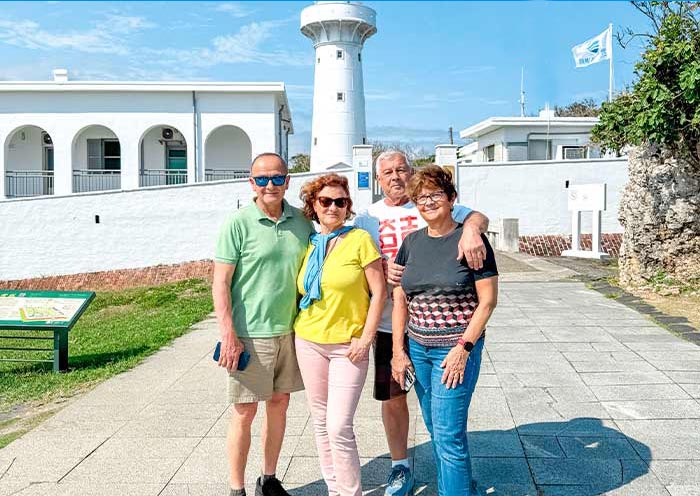
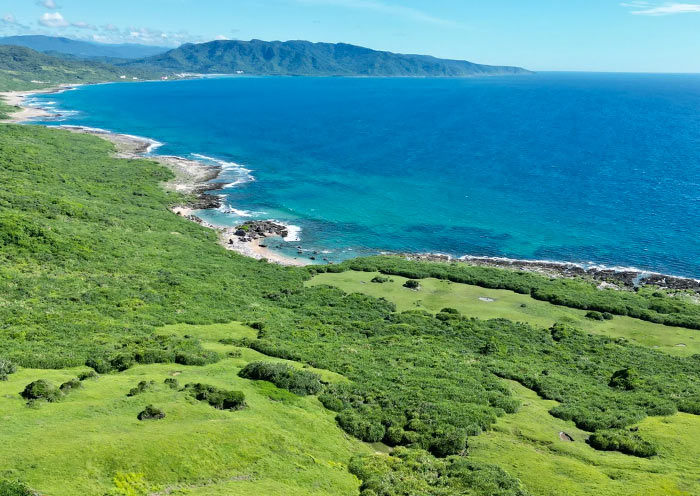
This morning, explore Kenting's National Museum of Marine Biology & Aquarium. Then, head to Taichung (300 km, 4.5 hours) via Kaohsiung. Overnight in Taichung.
The National Museum of Marine Biology & Aquarium is the largest aquarium in Taiwan, with a core focus on showcasing a diverse range of marine life and promoting marine culture education. It consists of three main themed exhibition halls: the Taiwan Waters Pavilion, the Coral Kingdom Pavilion, and the World Waters Pavilion.
The Taiwan Waters Pavilion highlights ecological connections, showcasing different aquatic ecosystems from mountain streams to the deep sea. The feeding explanations at the Ocean Pool are particularly distinctive, with guides directing visitors to observe various fish species while providing real-time explanations, offering an immersive learning experience.
The Coral Kingdom Pavilion focuses on coral reef ecosystems, allowing you to closely observe various corals and traverse the iconic, super-long underwater tunnel to experience being surrounded by marine life. Through the use of sunken ship scenes, the pavilion vividly illustrates how artificial reefs become habitats for underwater organisms.
The World Waters Pavilion expands cognitive boundaries through technological means, using 3D imaging technology to showcase fantastical scenes of ancient oceans, deep-sea areas, and polar waters, creating a futuristic atmosphere akin to a science museum.
Featuring a lineup of star marine creatures, including beluga whales, penguins, and seals, you can interact closely with these animal celebrities.
After that, head to Taichung.
Free Time Ideas:
Taichung Night Market: The biggest and most famous is Feng Chia Night Market. Stinky tofu, XXL fried chicken, bubble tea, cheese potatoes — you name it, they have it. It’s crowded, loud, and delicious.


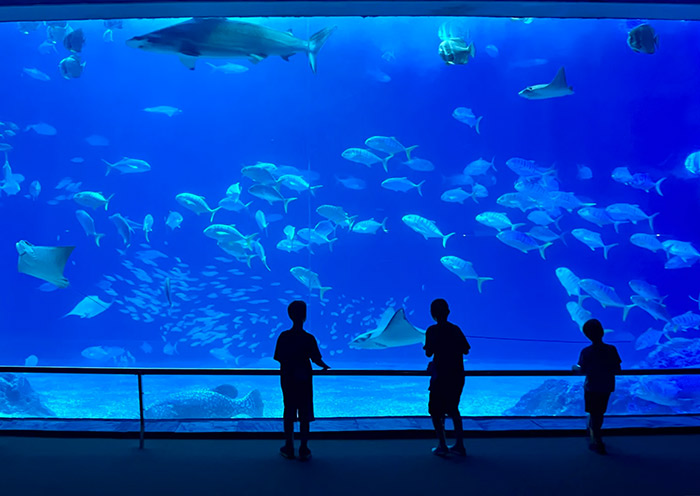
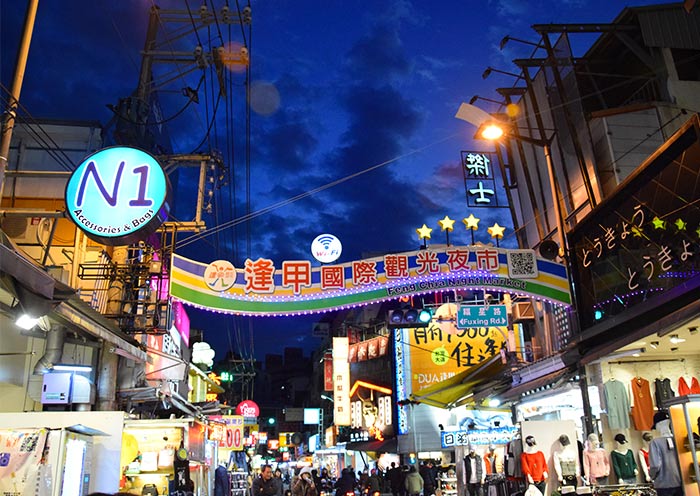
After breakfast, drive to explore Sun Moon Lake after visiting Taichung's Rainbow Village!
First, visit Rainbow Village (彩虹眷村) in Taichung. Lonely Planet calls this a must-visit global attraction. As one of Taichung's most popular sights, Rainbow Village shines with vibrant, colorful paintings covering entire village. These artworks were created by Rainbow Grandpa Huang Yung-Fu, who is hailed as "Taiwan's Miyazaki."
He began painting cartoon figures and rainbow lines on walls and ground in 2008, to prevent the demolition of old houses. Now it’s an open-air art gallery. Every wall is a unique piece of art. You can stroll through village. These paintings are pure, natural dopamine for you.
Then, head to Sun Moon Lake (日月潭) for half day, Taiwan's largest natural freshwater lake and one of its "Eight Great Sights," as well as a sacred site for Taiwan's Thao indigenous people. At 748 meters elevation, the 116 square-kilometer lake boasts emerald green waters. Lalu Island divides it into two halves: Sun Lake (north, round like the sun) and Moon Lake (south, crescent-shaped like the moon).
Look afar, lake is surrounded by mountains adorned with beautiful trees. Pagodas peek through the foliage, and sunlight dances on water's surface. That’s "jumping sunshine"! You can take a sightseeing yacht counter-clockwise to explore all the highlights (Shuishe Pier → Xuanguang Temple Pier → Ita Thao Pier → Shuishe Pier).
Departing from Shuishe Pier by sightseeing yacht, you'll pass Lalu Island (拉鲁岛), the legendary home of the Thao ancestral spirits, which partially submerged due to an earthquake. Arrive at Xuanguang Pier to disembark and try delicious tea eggs. Follow the trail to Xuanguang Temple (玄光寺) by the lake, then proceed to Xuanzang Temple (玄奘寺) to see the relics of Master Xuanzang, and finally ascend Ci'en Pagoda (慈恩塔) for a panoramic view of Sun Moon Lake. Return to the pier to head to Ita Thao Pier, enjoy local delicacies ashore, and then return to Shuishe Pier.
Optional: If time permits, you can choose to cycle around the lake near Shuishe Pier, or take a cable car to explore the indigenous cultural theme park, Formosan Aboriginal Culture Village (九族文化村).
After the tour, stay at a hotel in Sun Moon Lake.
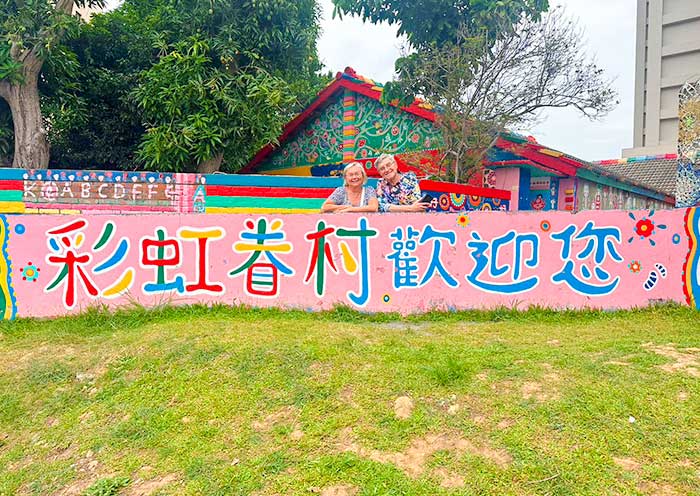
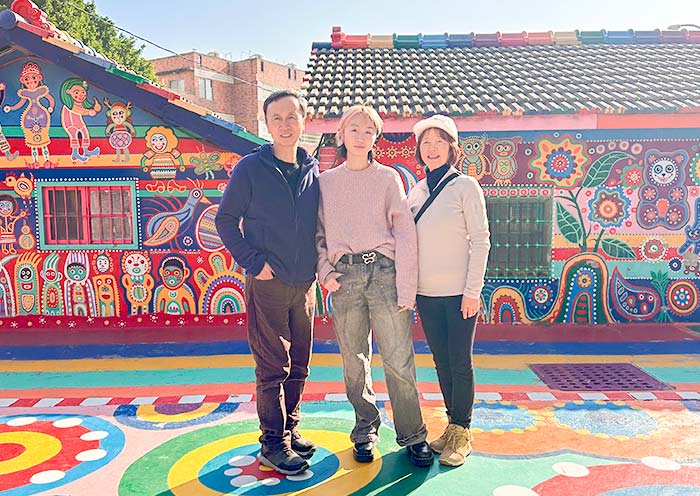
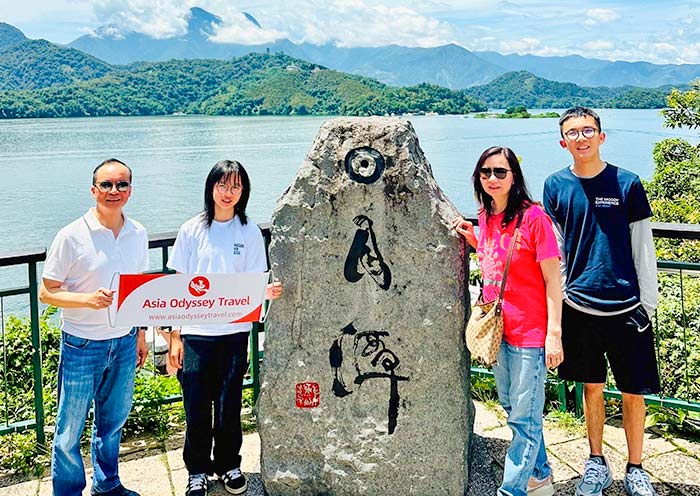
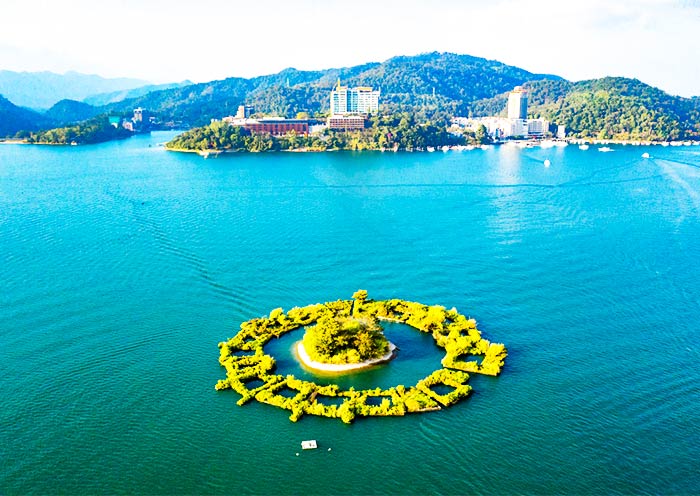
Wake up in Sun Moon Lake’s mist, you’ll head to Alishan this day (about 2.5h drive). On the way to Alishan, drink High-mountain Tea (高山茶). Taiwan is world-renowned tea hub for over 300 years. High-mountain teas, cultivated since the 1970s in Alishan, yield a crisp, sweet perfume. Take a sip, feel Alishan drifting out from tea! (Optional: Do a Cycling Tour around the Sun Moon Lake in the morning. Self-pay).
Then, head to Alishan, sung about by Asian superstar Teresa Teng as having "girls beautiful as water." Alishan stands alongside Sun Moon Lake as a major Taiwanese natural landmark.
You'll visit the core Alishan National Forest Recreation Area (阿里山森林游乐区), over 2,000 meters above sea level. This is Taiwan's most popular forest recreation area, famous for its forest railway, giant trees, evening glow, sunrise, and sea of clouds. The Alishan Forest Railway, one of only three high-mountain railways left globally. You’ll love red trains cut through mist, gliding past trees as they climb the mountain. Take ride and step into forest world! Choose Nature (A) route or Culture (B) route:
A Route (Zhaoping Station, Sisters Ponds, Three Brothers & Four Sisters, Golden Pig Auspice, Forever Love, Magnolia Garden, Shouzhen Temple)
Ride forest train or shuttle to Zhaoping Station. Then walk to Sisters Ponds where two sisters, loving same man but unwilling to harm each other, ended their lives. Then visit Three Brothers & Four Sisters (trees from shared roots), reach Golden Pig Auspice, a pig-typed tree stump shimmering under sun. Pass heart-shaped Forever Love tree to Magnolia Garden, and Shouzhen Temple (Alishan's largest temple dedicated to its guardian deity). Return by shuttle.
B Route (Shouzhen Temple, Three Generations of Wood, Alishan Museum, Xianglin Elementary School, Ciyun Temple, Alishan Sacred Tree Remains)
Take shuttle to start at Shouzhen Temple, visit Three Generations of Wood (three trees stubbornly growing from a single root). Explore Alishan Museum (tree specimens, indigenous culture), pass Xianglin Elementary (Taiwan's highest-altitude school), then reach cultural landmark of Alishan - Ciyun Temple (high Buddhist temple, Japanese Zen style). See Alishan Sacred Tree Remains, including the 2,300-year-old Xianglin Sacred Tree (香林神木). After gazing up at king of forest, take train back to the entrance.
Note: Train tickets and shuttle bus fees are at your own expense.
After the tour, drive back to hotel in Chiayi.
Tips:
1.Alishan Forest Railway tickets are popular. Consult us to purchase in advance.
2.Temperatures are low, even in summer, staying around 15∘C (59∘F). Bring a light down jacket.
3.Pack high-calorie snacks like chocolate.
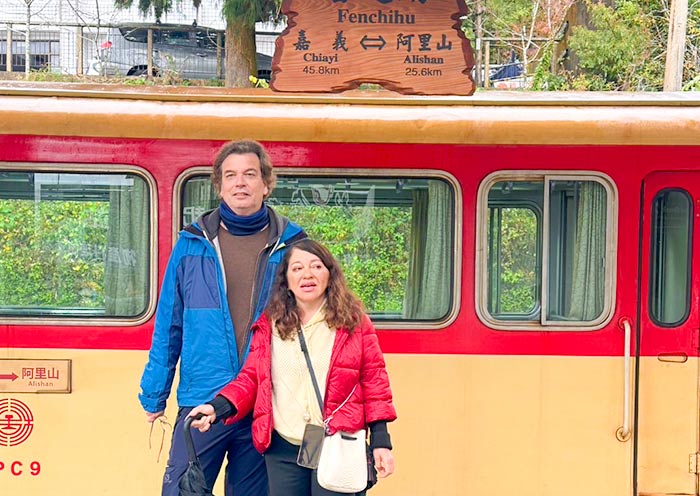
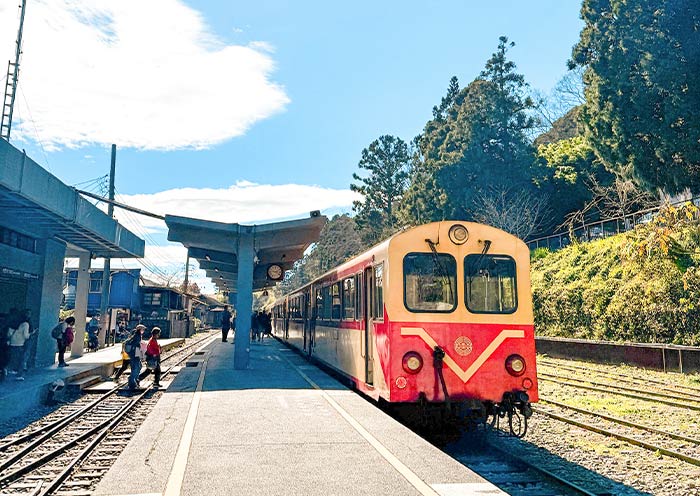
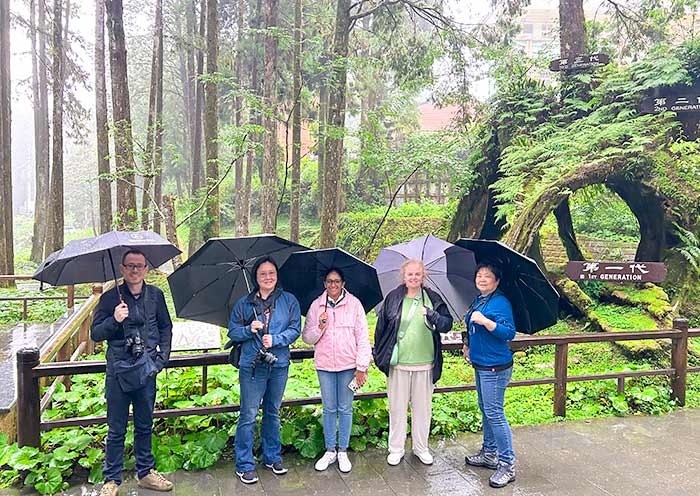
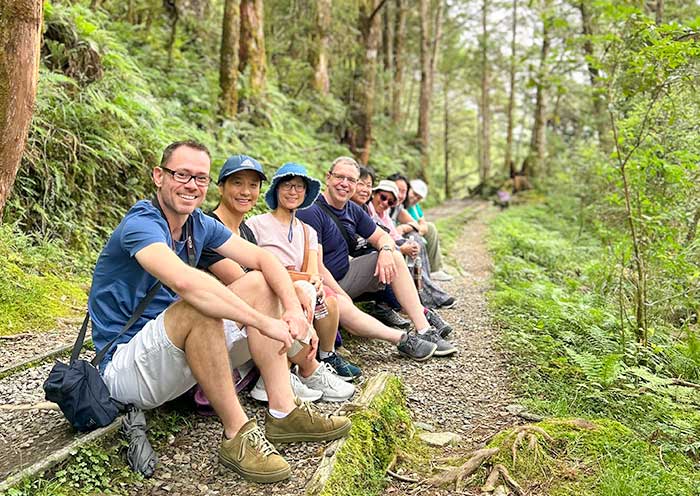
Today, you will depart Chiayi to Kaohsiung (100 km; 1.5 hours’ drive) after visiting Hinoki Village. When reach Kaohsiung, the third largest city & the largest port city in Taiwan, enjoy your time at Cijin Island from Cijin Old Street to Cijin Mazu Temple & Cijin Beach.
Chiayi is acclaimed as the "Forestry Capital", with the Alishan Forest Railway (fully opened in 1912) bearing witness to the rise and fall of its forestry industry. When visiting Chiayi, you must explore Hinoki Village (桧意森活村) - Taiwan’s earliest forestry settlement and a Japanese-era (1895–1945) dormitory area known as the "Little Kyoto of Taiwan".
Comprising 29 Japanese-style wooden historic buildings, this complex is Taiwan’s largest cluster of Japanese architecture. Built primarily with Alishan cypress, the structures include single-family houses for senior staff, duplexes for managers and families, four-unit residences for dependents, and row houses for single employees, along with a public bathhouse and guesthouse.
Entering Hinoki Village, the scent of cypress transports you into a century of Alishan forestry history. Here, you can learn about timber heritage, admire traditional craftsmanship, browse artisan shops for souvenirs, enjoy coffee, and sample Japanese sweets. It’s perfect for strolls or taking photos in a kimono!
Then, transfer to Kaohsiung’s Cijin Old Street (50 km, 1hour drive) of Cijin Island by Cijin Ferry.
Cijin Old Street is located on Cijin Peninsula, the earliest port in Kaohsiung, which was once primarily centered around fishing. Later, due to the construction of Kaohsiung Port, Cijin became an outlying island. As a must-visit tourist spot in Kaohsiung, Cijin Old Street, adjacent to the Cijin Ferry Terminal, is renowned for its fresh seafood and traditional snacks. Here, you can savor grilled squid, swordfish fried cakes, pork soup, oyster omelets, peanut coriander ice cream rolls, sweet potato cakes, pig blood cake, 50 Lan milk tea, and more. The street is lined with traditional old shops and unique vendors, exuding a nostalgic atmosphere.
Near Cijin Old Street, you can find Cijin Mazu Temple (Kaohsiung's first Mazu temple; Since 1673) for Mazu culture and Minnan architecture, or stroll on Cijin Beach for its black sands and sea view, perfect for experiencing the fishing village charm and harbor allure of the port of Kaohsiung!
After the food tour in Cijin Old Street, go back to your hotel in Kaohsiung.
Optional: (Self-pay; Double-check the route & time with your guide; Ferry+Taxi back to Hotel in Kaohsiung on your own):
Hike to Kaohsiung Lighthouse (Cijin Cihou Lighthouse) for Sunset: If time permits, you can quickly hike to the white lighthouse on Mount Cihou (Since 1883; 1 km one way), catching a glimpse of the colorful houses of Gushan Fishing Port nearby, Kaohsiung Harbor, and the landmarks of Kaohsiung City (85 Building) in the distance. It is a favorite spot for locals to take wedding photos, enjoy coffee, and watch the sunset. Here, you'll understand why Cijin Peninsula is known as the "Little Jeju Island."
Free Time Ideas:
1.Love River Night Boat (The Love Boat; Self-pay): Enjoy a romantic boat trip on the Love River, the mother river of Kaohsiung, for the landmarks of Kaohsiung, such as Kaohsiung Music Center (junction between Love River & Kaohsiung Port) & Great Harbor Bridge (longest cross-port rotating bridge in Asia; next to the Pier-2 Art Center).
2.Taiwan Food Tour in Kaohsiung Night Markets: Explore Ruifeng Night Market (瑞丰夜市; More Local; Closed on Mondays & Wednesday) or Liuhe Night Market (六合夜市; Opened Daily) for local food. Double-check with locals for the opening date & time.
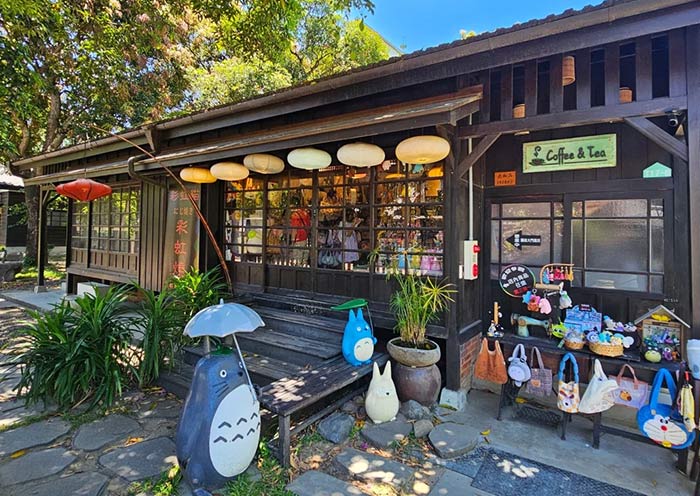
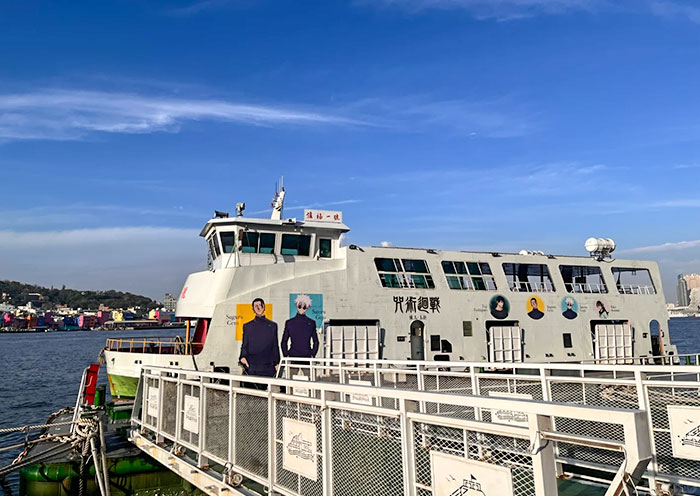
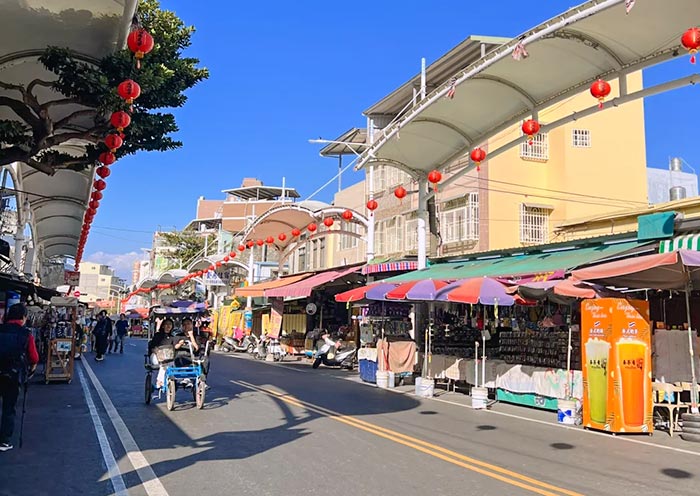
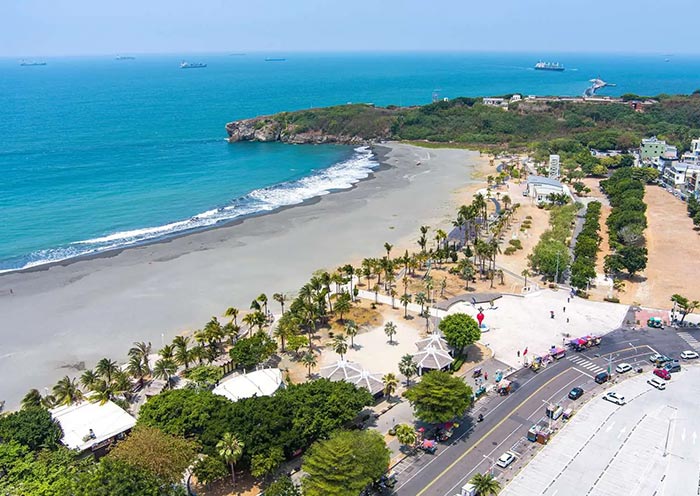
This morning, pay a visit to Fo Guang Shan Buddha Museum & Lotus Lake for the Dragon and Tiger Pagodas. Then, depart Kaohsiung in the evening.
In the morning, head to Kaohsiung for Fo Guang Shan Buddha Museum (Closed on Tuesdays). Fo Guang Shan Buddha Museum (佛光山佛陀紀念館) is the largest Buddhist monastery in Taiwan, and its Big Buddha of Fo Guang is a famous landmark in Kaohsiung. The museum was founded in 1967 by Master Hsing Yun (星云大师; 1927-2023) and his disciples. Master Hsing Yun is the founding abbot of Fo Guang Shan, the 48th generation heir of the Linji Chan School, who was ordained at Qixia Temple in Nanjing and later propagated Buddhism in Taiwan at the age of 23. He introduced and advocated the "Three Acts of Goodness三好运动" in 1998 (Have Good Intentions, Do Good Deeds, Speak Good Words存好心、做好事、说好话), which gained widespread popularity in schools and society.
You can explore the Path to Buddhahood (成佛大道), a 1.5-kilometer path lined with Bodhi trees symbolizing enlightenment and wisdom. Along the way, you can visit highlights such as the Eight Pagodas, the Pavilion for Ten Thousand People, the main museum, and the Big Buddha of Fo Guang. To reach the Pavilion for Ten Thousand People (万人照相台), you need to climb 37 steps, symbolizing the Thirty-Seven Practices leading to enlightenment. From the Pavilion for Ten Thousand People, you can take a photo with the Big Buddha by facing east and with the Eight Pagodas (八塔) by facing west. The Main Museum (本馆; only available on weekends) is one of the key structures of the Buddha Museum, which enshrines the true relics of Buddha. Finally, you will have a close-up view of the Giant Buddha of Fo Guang (佛光大佛), made of over 1,800 tons of bronze and iron, standing approximately 108 meters tall, making it one of the tallest outdoor seated Buddhas in the world.
Approximately 20% of the population in Taiwan are Buddhist believers, and the Fo Guang Shan Buddha Museum is a popular destination for locals to pray, meditate, and contemplate life's philosophy. The museum hosts an annual Lantern Festival during the Chinese New Year, featuring blessing lantern displays, floral parades, markets, and other activities. Additionally, the vegetarian meals here are also quite popular.
Then, head to Lotus Lake (Lianchitan), one of the must-visit spots in Kaohsiung. Every summer, lotus flowers bloom, filling the air with a delightful fragrance, hence the name Lotus Pond. It is not only a great place to admire lotus flowers but also a destination for experiencing Eastern religious culture due to its pavilions, giant statues, and surrounding city walls. When you visit Lotus Lake, you cannot miss the iconic "Dragon and Tiger Pagodas" by its shores. This pagoda was recommended by CNN, making it one of Kaohsiung's most traditional religious scenic areas.
Built in 1976, the Dragon and Tiger Pagodas stand at seven stories tall and are connected to the Nine-Turn Bridge, reflecting on the lake's surface to create a picturesque scene. It's said that there's a tradition when visiting the Dragon and Tiger Pagodas – you should enter through the dragon's mouth and exit through the tiger's mouth, which brings good luck and wards off evil. The pagoda's interior walls are adorned with exquisite ceramic artwork depicting moral stories, crafted by renowned artists. Additionally, along the shores of Lotus Lake, there are many temples and attractions like the Spring and Autumn Pavilion and the Beiji Xuantian Shangdi Temple. It is a popular spot for locals to stroll, cycle, and relax by the lake.
At last, it is time to end your Taiwan Tour. Thank you for choosing Asia Odyssey Travel (AOT) for your Asia Tour, and we are always here working for you and hope to see you again for your next trip to Asia. Safe journey!
Extension Ideas:
1.You can extend your Taiwan Tour to other cities in Taiwan, such as Taitung, Tainan, Hualien, etc. We can customize your itinerary.
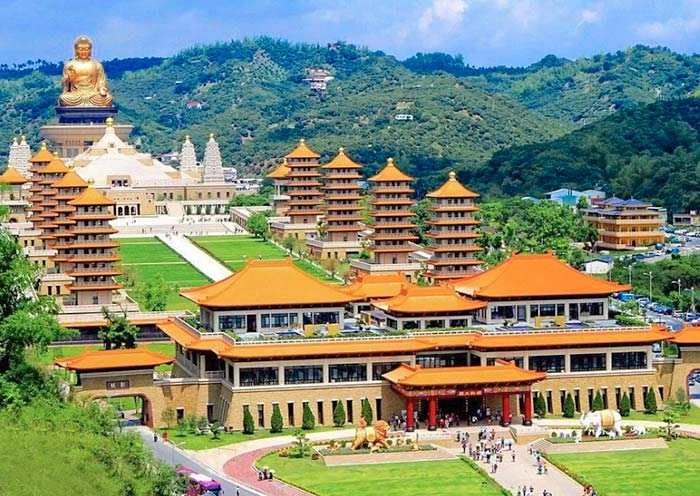
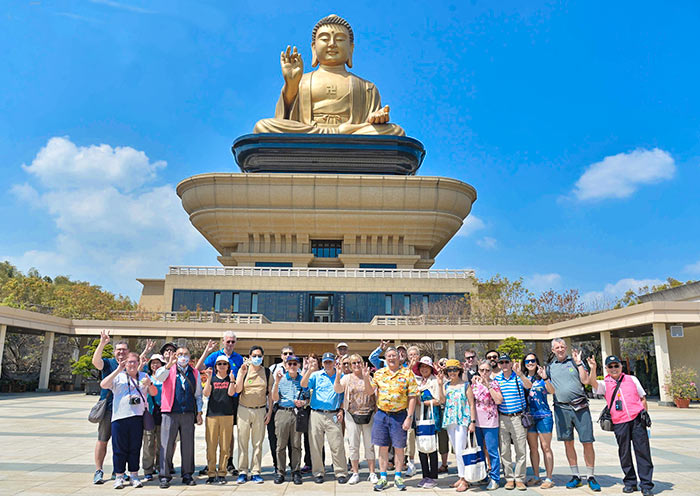
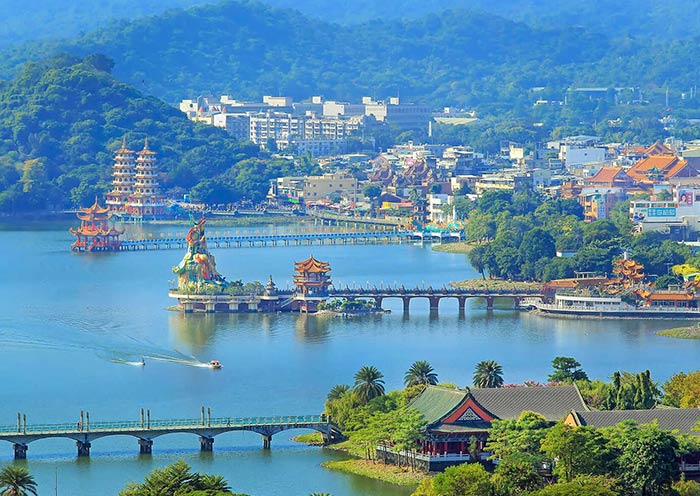
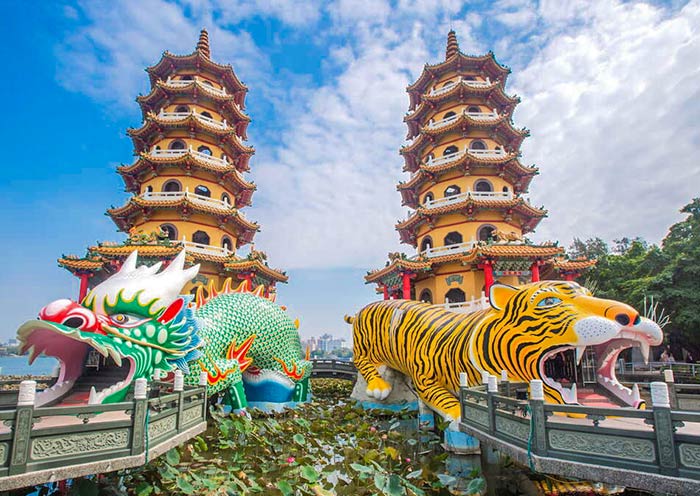
Price: What’s Included & What’s Excluded
What's Included:
What's Excluded:
Important Trip Notes for Booking Taiwan Tours
Accommodation & Hotel Condition for Your Taiwan Tour
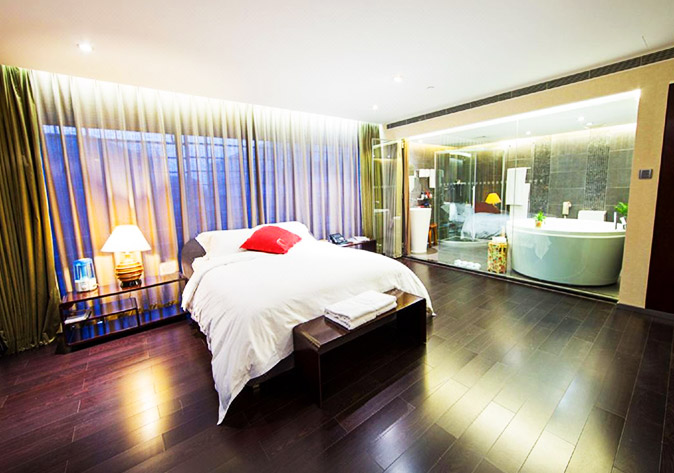

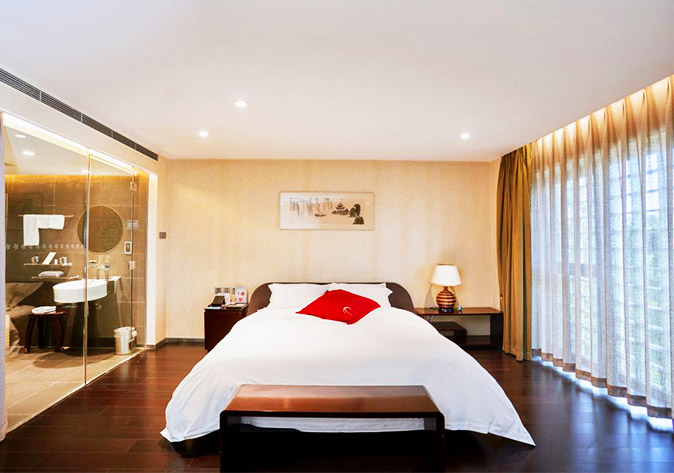
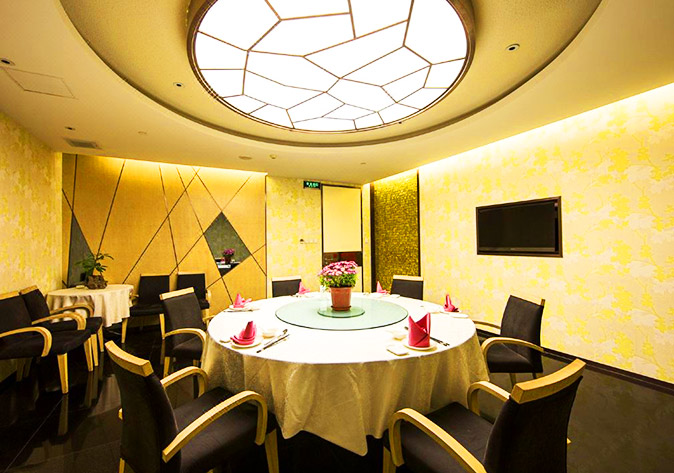
Photo Gallery for This Itinerary
Latest Taiwan Tours Reviews from Our Customers

Lujia zhang
United States
Destination(s): Taiwan
Date of Experience: Aug 09, 2025
Tour Customized by: Owen
You May be Interested in This Tour: Customized Tour

Sophie Carter
America
Every time I travel with my family, I can't help but be the most stressful one, always taking care of my parents and children. But Asia Odyssey Travel's Taiwan tour was completely stress-free. I'm so thankful! Their local team is excellent. We never had to worry about a thing, allowing us to fully enjoy Taiwan's beauty and culture. For our next family tour, Asia Odyssey Travel will definitely be my first choice.
Destination(s): Taiwan
Date of Experience: Jul 10, 2024
Tour Customized by: Isaac
You May be Interested in This Tour: 11 Days Taiwan Family Tour & Taiwan Round Island Tour

Sakura Tanaka
Japan
I had never tried oyster omelets or stinky tofu anywhere before. This trip was a total food adventure! Fortunately, they tasted good. Thanks to my consultant and guide's local hacks, my family enjoyed a good appetite at night markets in Kaohsiung and Tainan. Every local staff member we encountered was incredibly friendly, patient, and genuinely eager to make our trip special. It's the personal touch that really stands out.
Destination(s): Taiwan
Date of Experience: Jul 10, 2024
Tour Customized by: Shirley
You May be Interested in This Tour: 3 Days Kaohsiung Food Tour - Try Taiwan Food in Kaohsiung & Tainan
Price: Request
(Based on a private tour for two people. Price varies depending on program, travel date, number of people.)
Free Enquiry! You don’t need to pay for the reservation.
- United States (+1)
- Australia (+61)
- Singapore (+65)
- Malaysia (+60)
- Philippines (+63)
- Canada (+1)
- Italy (+39)
- Indonesia (+62)
- United Kingdom (+44)
- Spain (+34)
- Mexico (+52)
- Hong Kong (+852)
- Thailand (+66)
- United Arab Emirates (+971)
- New Zealand (+64)
- South Africa (+27)
- Germany (+49)
- Brazil (+55)
- India (+91)
- France (+33)
- Vietnam (+84)
- The Netherlands (+31)
- Saudi Arabia (+966)
- Ireland (+353)
- Argentina (+54)
- Switzerland (+41)
- Romania (+40)
- Pakistan (+92)
- Japan (+81)
- Portugal (+351)
- Bangladesh (+880)
- South Korea (+82)
- Puerto Rico (+1)
- Türkiye (+90)
- China (+86)
- Belgium (+32)
- Qatar (+974)
- Greece (+30)
- Taiwan (+886)
- Austria (+43)
- Poland (+48)
- Israel (+972)
- Chile (+56)
- Sri Lanka (+94)
- Nigeria (+234)
- Peru (+51)
- Colombia (+57)
- Hungary (+36)
- Nepal (+977)
- Denmark (+45)
- Bulgaria (+359)
- Norway (+47)
- Slovenia (+383)
- Sweden (+46)
- Kuwait (+965)
- Costa Rica (+506)
- Ecuador (+593)
- Venezuela (+58)
- Malta (+356)
- Croatia (+385)
- Tunisia (+216)
- Czechia (+420)
- Mongolia (+976)
- Bahrain (+973)
- Mauritius (+230)
- Papua New Guinea (+675)
- Cambodia (+855)
- Dominican Republic (+1)
- Luxembourg (+352)
- Finland (+358)
- Guatemala (+502)
- Myanmar (+95)
- Maldives (+960)
- Slovakia (+421)
- Laos (+856)
- Serbia (+381)
- Brunei (+673)
- Oman (+968)
- Macao (+853)
- Panama (+507)
- Morocco (+212)
- Jordan (+962)
- Georgia (+995)
- Fiji (+679)
- Bolivia (+591)
- Lithuania (+370)
- Bahamas (+1)
- Cyprus (+357)
- Latvia (+371)
- Bhutan (+975)
- Iraq (+964)
- Iran (+98)
- Kenya (+254)
- Jamaica (+1)
- Zimbabwe (+263)
- Azerbaijan (+994)
- Uruguay (+598)
- Estonia (+372)
- Andorra (+376)
- Cameroon (+237)
- Ghana (+233)
- Kazakhstan (+7)
- Nicaragua (+505)
- Egypt (+20)
- Russia (+7)
- Albania (+355)
- Réunion (+262)
- Montenegro (+382)
- Algeria (+213)
- Afghanistan (+93)
- Martinique (+596)
- Uganda (+256)
- Honduras (+504)
- North Macedonia (+389)
- Trinidad and Tobago (+1)
- Suriname (+597)
- Antigua and Barbuda (+1)
- Zambia (+260)
- Ukraine (+380)
- Armenia (+374)
- Barbados (+1)
- Belarus (+375)
- Palestine (+970)
- Lesotho (+266)
- Moldova (+373)
- Ethiopia (+251)
- French Polynesia (+689)
- Gambia (+220)
- Guam (+1)
- Gibraltar (+350)
- Isle of Man (+44)
- New Caledonia (+687)
- El Salvador (+503)
- Comoros (+269)
- Seychelles (+248)
- Chad (+235)
- Samoa (+685)
- Cook Islands (+682)
- Palau (+680)
- Paraguay (+595)
- DR Congo (+243)
- Solomon Islands (+677)
